How to drink Brazilian coffee beans description of varieties and taste characteristics of Brazilian coffee beans
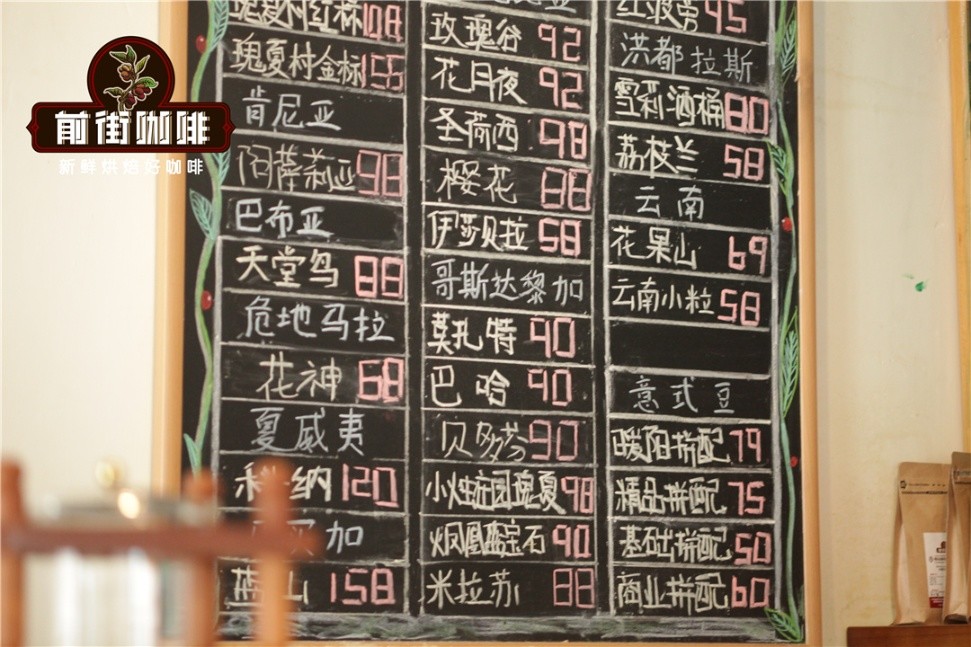
We often say that the higher the altitude, the higher the density of coffee beans, the more rich and diverse the flavor of coffee will be. On the other hand, the elevation of Brazil is generally low, the terrain is flat, and there is a lack of microclimate, so it is more suitable for large-scale planting of soft beans with mild flavor. Low acid, balanced taste and friendly price make Brazilian coffee the first choice of many Italian boutique coffee. Three of the four Italian beans in the front street contain Brazilian beans. The addition of Brazilian beans not only provides chocolate and cream aroma, balanced tonality is also more conducive to the stability of the extraction.
Coffee producing areas in Brazil
Since the 1970s, Brazil has grown coffee for more than 300 years. Coffee has become the main source of local economy and is now the largest coffee producer in the world. Brazil's production area is much larger than that of other countries, and there are currently 17 states that produce coffee, mainly in the southeast. The four major producing areas, led by Minas Gerais Minas Gerais, produce 90 per cent of the country's coffee every year. Minas Gerais alone has a coffee planting area of 1.22 million hectares, equivalent to all the coffee cultivation in Colombia.
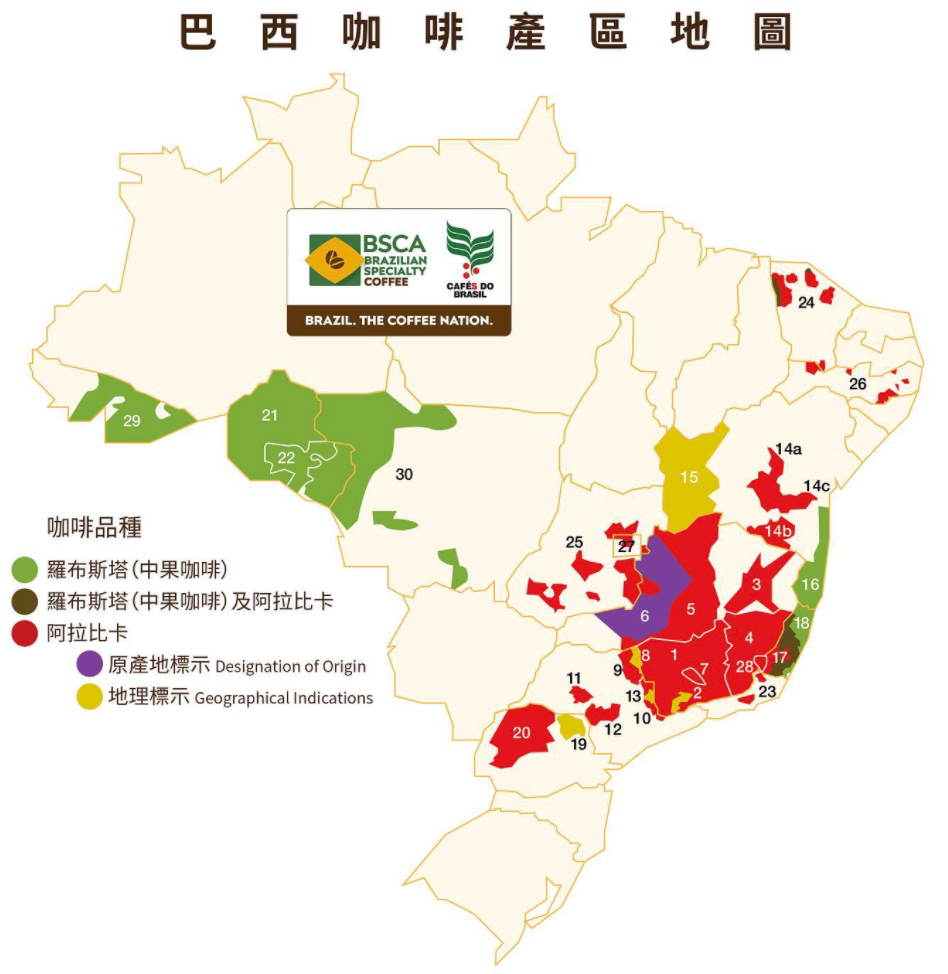
When it comes to the representatives of the boutique coffee producing areas in Brazil, they are most famous for Sirado and South Minas in Minas Gerais, and Morgiana in S ã o Paulo. The coffee market summed up a rule: the production of coffee beans in Brazil depends on whether the harvest of Minas Gerais is rich or poor, while the harvest of Minas Gerais depends on South Minas, Hilado and Morgiana.
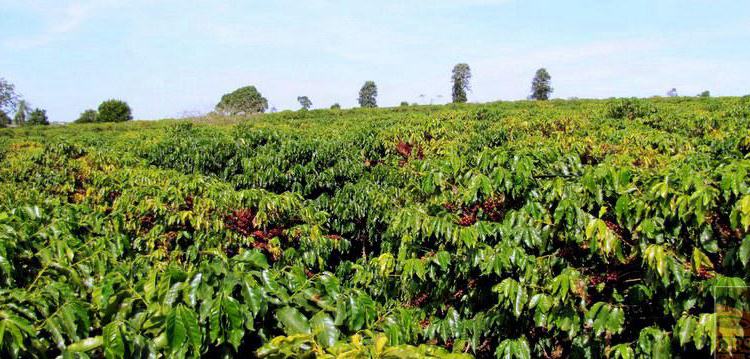
The Cerrado Hilado producing area, which has the same name as the Hirado Prairie, especially refers to the Cerrado area in the western part of Minas Gerais in the coffee producing area. The flat terrain and the concentration of the harvest season are very suitable for large-scale management of harvesting. Coupled with the high altitude and fertile soil above 1000 meters, many exporters took a fancy to this treasure land in their early years and built coffee farms here, covering an area of almost more than 10 hectares.
South Minas Sul de Minas has more than 1100 above sea level, undulating foothills, rich landforms, obvious dry and wet seasons, large temperature difference between day and night, and rich microclimate, which is suitable for cultivating elegant bourbon and yellow bourbon, so it naturally becomes the main producing area of boutique coffee.
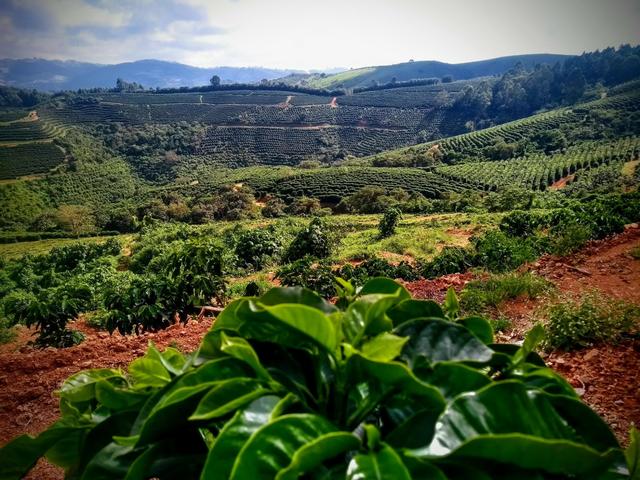
Morgiana Mogiana is near South Minas, where coffee is mostly grown between shrubs, grasslands and vegetation, where fertile red volcanic soil allows the coffee fruit to absorb sufficient nutrients and develop into a full aroma. Here is divided into a part of adhere to the traditional farm operation, while the other part of the new modern standardized operation management, the local coffee quality has been greatly improved. From the coffee produced here, Qianjie tastes the sweetness of sugarcane that is not found in other producing areas, as well as fruity and chocolate flavor.
Brazil produces a wide variety of coffee. Qianjie compared several producing areas with different varieties of Brazilian beans, and finally decided to choose half-sun red bourbon coffee from Syrador as the face of Brazil. Add this sweet and peaceful coffee to the Qianjie rations bean series, so that everyone can also try the Brazilian flavor.
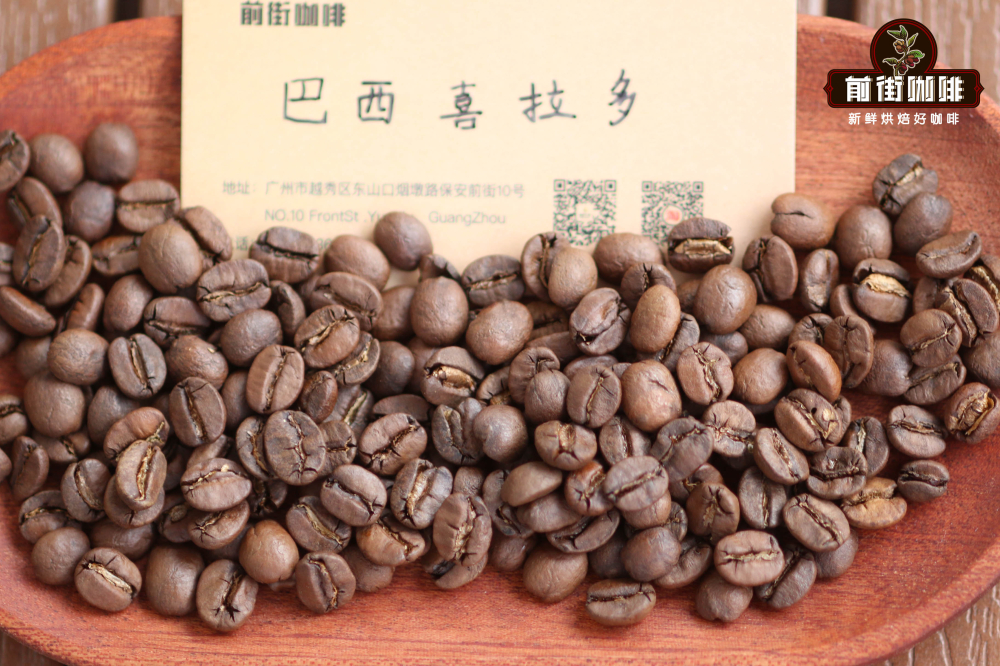
Brazilian bourbon variety
At present, bourbon, New World and Kaduai are the main coffee varieties in Brazil, of which bourbon has the longest history and is derived from the iron pickup gene mutation. The common bourbon kind of coffee changes from green to yellowish, orange, red, and finally to a fully ripe dark red, which is what we call red bourbon. Growing at high altitude, the red bourbon coffee has a balanced flavor, mellow aroma and soft acidity. Qianjie daily rations beans are selected from the red bourbon.
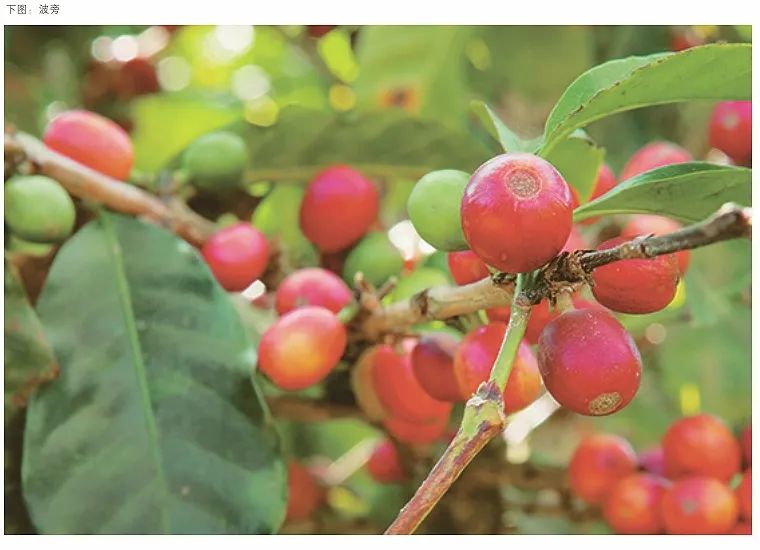
The fruit is yellow instead of cherry red at ripening stage and was found in 1930. Huang bourbon's "yellow" is due to the genetic selectivity of color. Yellow bourbon planted in high altitude areas will contain a lot of fructose, which can show a sweet and juicy flavor. It has swept the Brazilian "extraordinary Cup" competition for two years in a row, almost winning the top three prizes and sweeping the boutique coffee industry! On the front street, the yellow bourbon coffee at the Brazilian Queen's Manor is roasted into the aroma of creamy peanuts with the sweetness of sugar cane.
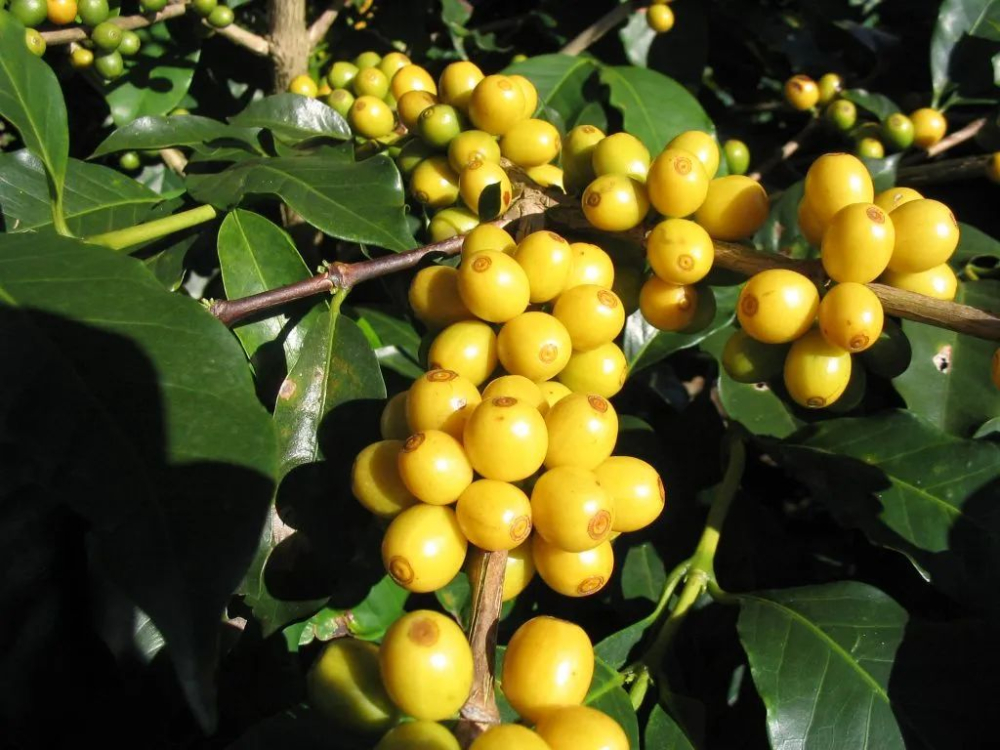
Half-sun in Brazil
Brazil's raw beans are treated in the sun, half-sun, washing, the use will be based on the local climatic conditions.
Before 1990, almost all of Brazil used rough sun treatment, and the coffee fruit was poured into the cement ground to dry. Coffee was easy to have miscellaneous smells such as soil and unpleasant excessive fermentation, which greatly affected the quality of Brazilian coffee. In 1990, the Brazilian Coffee Research Institute developed a half-sun method based on the characteristics of the local dry climate. The peel of the coffee fruit is removed before drying, leaving only a thin pectin layer to be exposed for 1-3 days, then machine-dried to 12% water content, and then ripe in a storage container. It not only shortens the treatment time, but also reduces the negative flavor brought by the treatment process, and greatly improves the quality of Brazilian beans.
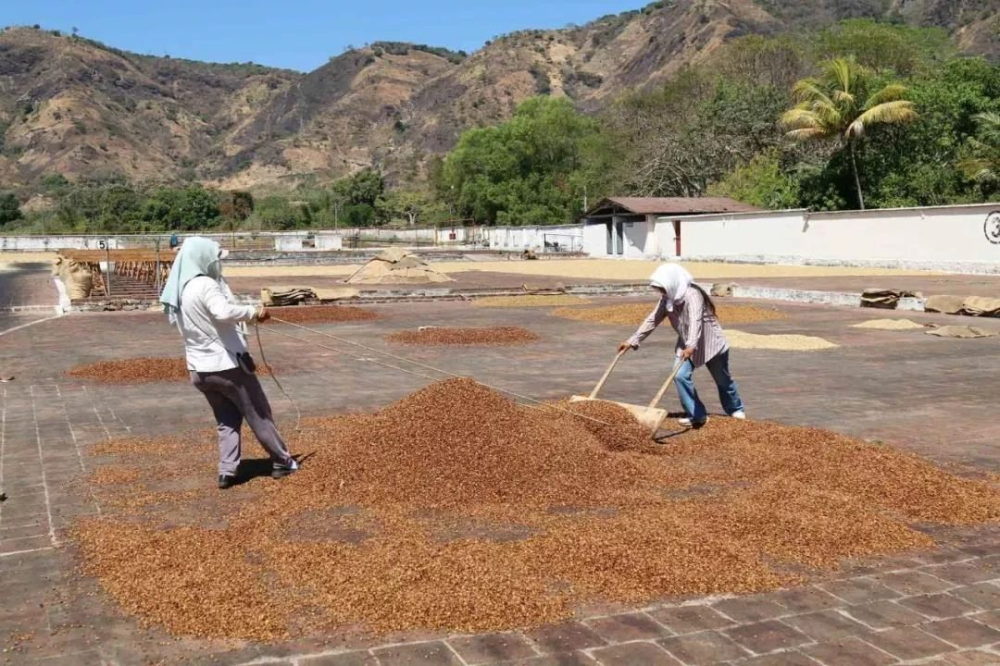
Of course, in addition to efficiency-seeking half-sun coffee, there are still places in Brazil to retain the traditional tanning method. The Sun Queen Manor on the front street pours the fruit into the sink before drying and removes the undermature fruit by flotation. In order to avoid the smell of soil and fermentation, the Queen's Manor spread the coffee fruit on the African viaduct throughout the process, arranged for the staff to turn regularly to reduce the uneven heating, and keep the coffee as clean as possible.
How does Brazilian coffee taste good?
The article in front of the street also mentioned that Brazilian coffee has a nutty, peanut flavor, a sweet smell of chocolate, and a mellow and solid taste. Even a simple way of brewing can restore the pure Brazilian flavor. Qianjie's favorite is hand-brewed. Here, Qianjie takes Brazilian Hilado rations beans as an example to extract a cup of Brazilian hand-made coffee.
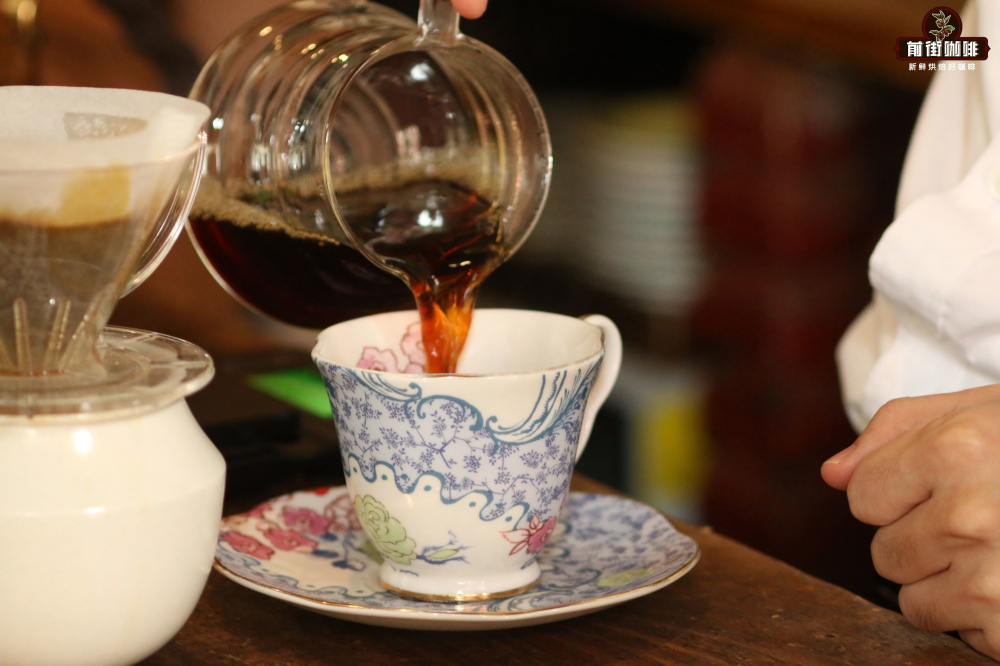
Coffee beans in front of the street is recommended to use coffee beans in the best taste period, if the roasting date has been more than a month, some of the aroma may have been lost, and even produce woody flavor. The coffee beans shipped in front of the street are all baked within 5 days, so that when you receive them, they should be in the stage of appreciation with the fullest aroma.
When brewing coffee with different degrees of roasting, Qianjie will choose the corresponding brewing parameters. For example, today's Brazilian Hilado coffee beans are medium-to-deep roasting, and the caramelization reaction is more common than that of lightly roasted coffee beans, so it is easier to release bitter macromolecules. In order to avoid excessive extraction of miscellaneous flavor, Qianjie will lower the water temperature a little bit. The brewing temperature of light roasted coffee is 91-93 ℃, and 87-88 ℃ is recommended in the front street of medium and deep roasted coffee beans. The finer the grinding degree is, the more soluble substances are released from the coffee at the same extraction time. In order to avoid high coffee extraction rate, Qianjie will thicken the grinding degree, using medium grinding degree, the store EK43s- scale is 10.5, and the Chinese standard sieving rate is 75%.
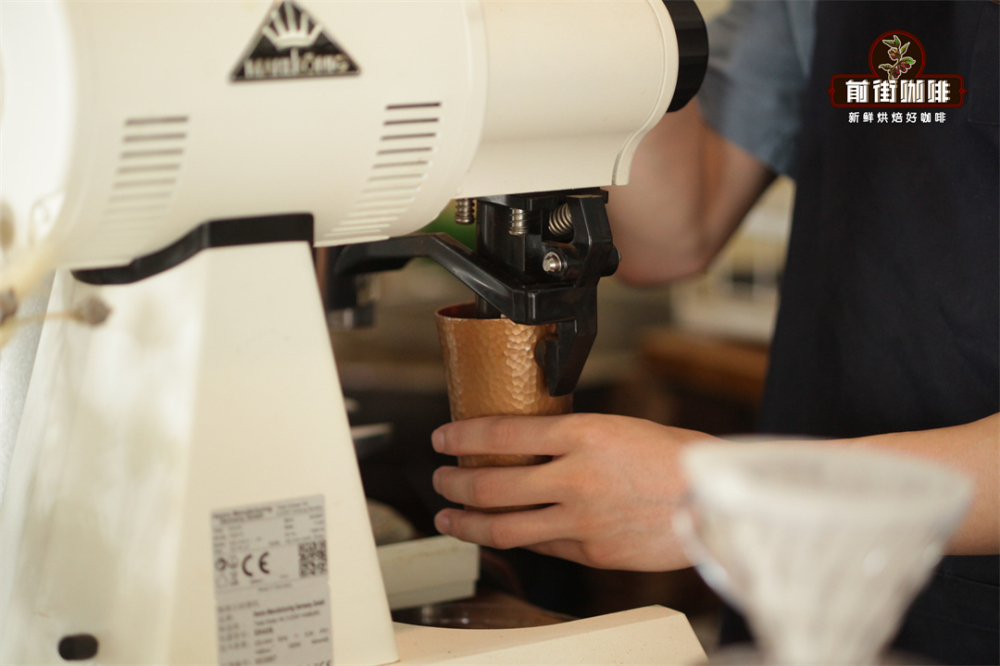
Medium and deep roasted coffee beans mainly show a mellow and round taste, in view of this characteristic, Qianjie will choose the slower flow rate of KONO filter cup for extraction. The upper part of the KONO is a smooth surface and the bottom is a 1/3-long diversion rib. It can make the filter paper fit better with the filter cup, limiting the air flow up, and the hot water can only flow down, forming the effect of siphon extraction, so that the aroma substances of coffee powder can be released more fully.
Filter cup: KONO filter cup
Water temperature: 87: 88 ℃
Amount of powder: 15g
Powder / water ratio: 1:15
Degree of grinding: medium degree of grinding (Chinese standard No. 20 screen pass rate 75%)
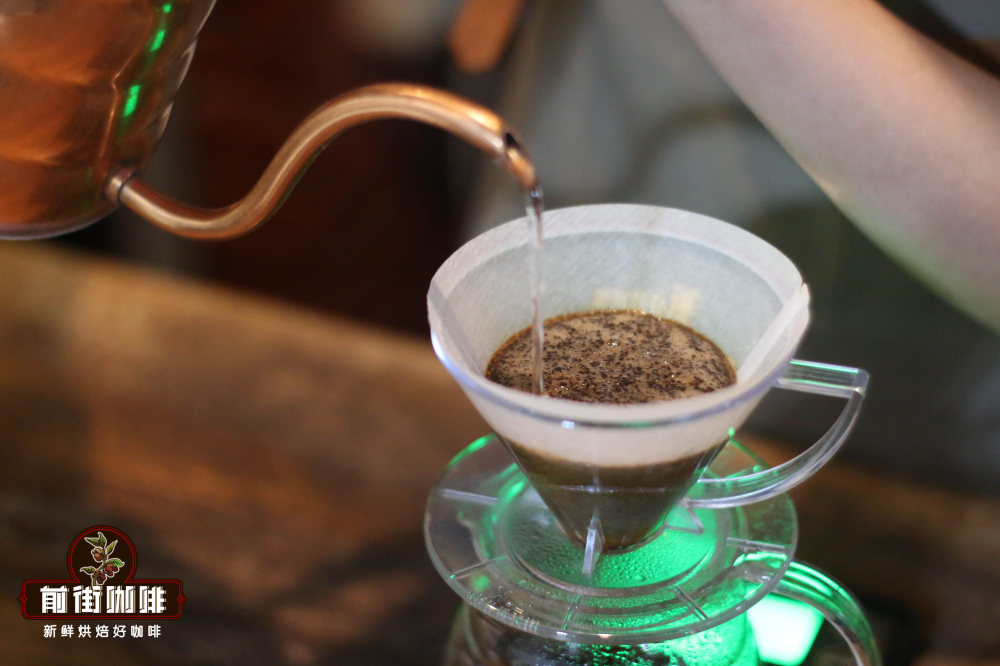
Moisten the powder bed with twice as much water as coffee powder to form a drum and steam for 30 seconds, then fill the small water circle from inside to outside to 125 g, wait for the powder bed to drop to half of the filter cup, and continue to pour the same fine water into the third section to 225 g, until all the coffee liquid has been filtered and the filter cup has been removed for about 2 minutes.
Brazilian Hilado red bourbon rations beans: the entrance has obvious sweetness, with a hint of lemon aroma, rich nuts, caramel flavor, the latter part of the performance has an obvious dark chocolate flavor, the overall feeling is more round.
Professional coffee knowledge exchange more coffee bean information please follow the coffee workshop (Wechat official account cafe_style)
For more boutique coffee beans, please add private Qianjie coffee on Wechat. WeChat account: qjcoffeex
Important Notice :
前街咖啡 FrontStreet Coffee has moved to new addredd:
FrontStreet Coffee Address: 315,Donghua East Road,GuangZhou
Tel:020 38364473
- Prev
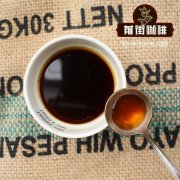
How to make Coffee beans Coffee tastes good | teaches you how to make coffee
Professional coffee knowledge exchange more coffee bean information please follow the coffee workshop (Wechat official account cafe_style) hand coffee ready brewing utensils: hand brewer, coffee 15g, electronic scale, powder cup, filter cup, hand grinder, filter paper, sharing pot. Weigh 15g coffee beans and pour them into a hand grinder for medium grinding, making the coffee powder as big as sugar.
- Next

Historical stories of main producing areas of Brazilian Coffee beans which brand tastes good
Professional coffee knowledge exchange more coffee bean information please follow the coffee workshop (Wechat official account cafe_style) Brazil, of which seven states have the largest production, accounting for 98% of the country's total output. Sao Paulo State (Mogiana, Centro-Oeste) Parana State (No
Related
- Beginners will see the "Coffee pull flower" guide!
- What is the difference between ice blog purified milk and ordinary milk coffee?
- Why is the Philippines the largest producer of crops in Liberia?
- For coffee extraction, should the fine powder be retained?
- How does extracted espresso fill pressed powder? How much strength does it take to press the powder?
- How to make jasmine cold extract coffee? Is the jasmine + latte good?
- Will this little toy really make the coffee taste better? How does Lily Drip affect coffee extraction?
- Will the action of slapping the filter cup also affect coffee extraction?
- What's the difference between powder-to-water ratio and powder-to-liquid ratio?
- What is the Ethiopian local species? What does it have to do with Heirloom native species?

